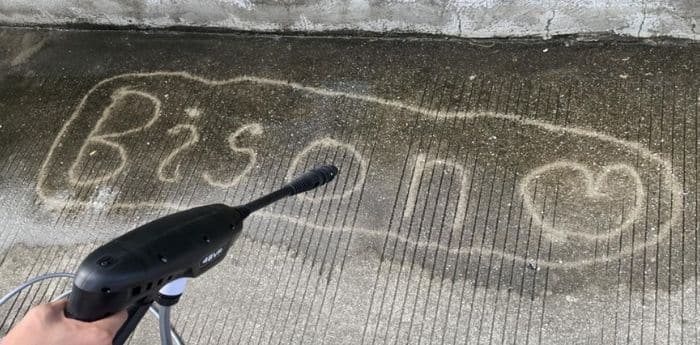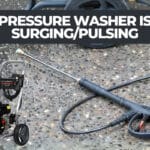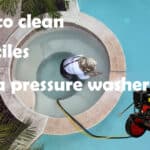
BISON Santy
Hello, I am Santy, the funder of bisonclean.com. I have been in cleaning machinery field for more than 5 years now, and the purpose of this article is to share with you the knowledge related to pressure washer from a Chinese supplier's perspective.
Table of Contents
Imagine the frustration of overflowing gutters after a heavy rain—water spilling over, soaking your yard, damaging your siding, or even seeping into your foundation. Clogged gutters can lead to costly repairs and hours of hard labor with ladders and buckets. But what if there was an easier way?
Can I use a pressure washer to clean gutters? The answer is yes—with the right tools and safety precautions. When used correctly, a pressure washer can quickly and efficiently remove leaves, dirt, and debris from your gutters.
In this article, we’ll guide you step-by-step on how to clean gutters with a pressure washer safely and effectively. Whether you’re a homeowner or a contractor, this method can help you save time and effort.
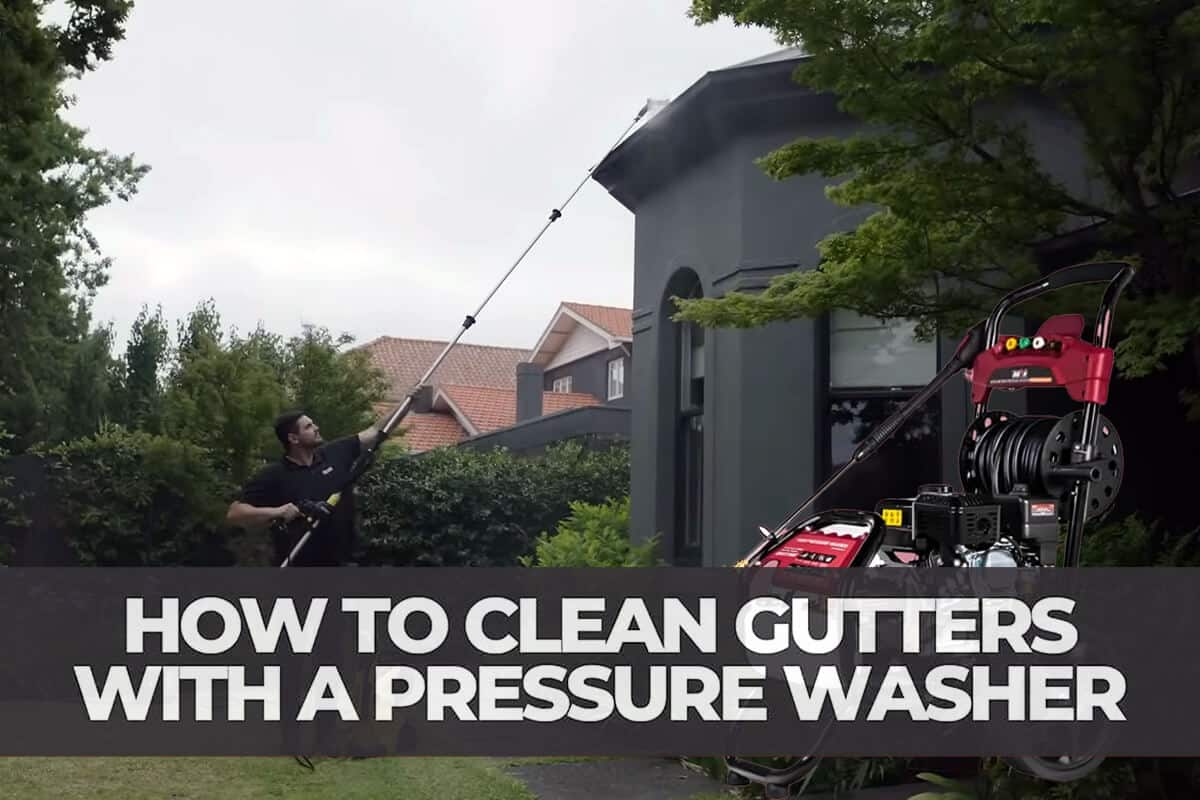
Why using a pressure washer is better for cleaning gutters
Cleaning gutters is often messy and time-consuming, but using a pressure washer makes the job faster, safer, and more effective. Here’s why it’s a smarter choice than cleaning by hand:
1. Efficiency and speed
A pressure washer dramatically reduces cleaning time. Instead of manually scooping debris, the high-pressure spray quickly blasts away leaves, dirt, and sludge. What might take hours by hand can often be done in about an hour with a pressure washer.
2. Reach and convenience
With attachments like a curved nozzle or gutter cleaning wand, you can clean gutters while standing safely on the ground. Even if a ladder is needed, you’ll move it far less. This not only saves effort but also reduces the risk of falls.
3. Deep cleaning power
Pressure washers remove more than just loose debris—they clear out built-up grime and stubborn clogs that hand tools can miss. This ensures water flows freely, helping to prevent damage to your siding, roof, and foundation.
Essential equipment for cleaning gutters with a pressure washer
1. Pressure washer specifications
Use a pressure washer rated between 1,500 and 3,000 PSI. This range is powerful enough to clear debris without damaging gutters or roofing. Avoid using units over 3,000 PSI, which can harm gutters or strip roof shingles. Start with low pressure and adjust as needed.
2. Cleaning accessories
- Telescoping wand: Extends your reach up to 24 feet, reducing the need for ladders. Choose lightweight, adjustable models for comfort and control.
- Gutter cleaning attachment: A curved or U-shaped nozzle directs water into gutters efficiently while keeping you safely on the ground or ladder.
3. Cleaning aids
This includes cleaners for tough stains, and tarps or drop cloths to protect flower beds and other sensitive areas from falling debris. You may also need a shovel or spade for tough blockages. A bucket or leaf blower can help with dry leaves before washing.
4. Safety equipment
Wear gloves, safety goggles, and non-slip shoes. Long sleeves, pants, and a hat provide extra protection from debris and splashing. Consider ear protection, especially when using high-powered washers.
Preparation steps for cleaning gutters with a pressure washer
Initial inspection
- Check gutters for damage like loose brackets, cracks, or sagging. Repair any issues before using a pressure washer, as high pressure can worsen them.
- Clear the area below—move furniture, plants, and remove tripping hazards.
Pressure washer setup
- Connect the washer to a water source and ensure flow before turning it on. Follow the manufacturer’s instructions for safe use.
- Use a 15° or 25° nozzle; a turbo nozzle can be used carefully for tough clogs. Attach a curved or U-shaped wand for better reach. For installation questions, see “How to use a pressure washer extension wand?“
- Start on low pressure and test on a safe surface. Adjust as needed to clear debris without damaging the gutters.
Step-by-step cleaning process: How to clean gutters with a pressure washer
#step 1. Remove large debris
Before turning on the pressure washer, manually remove large leaves, twigs, and clumps of moss—especially near downspouts. Use a gutter scoop or gloved hands and collect debris in a bucket or on a tarp.
#step 2. Initial rinse
Use a 15° or 25° nozzle to spray water along the gutter, loosening dirt and grime. Aim forward and slightly sideways to direct water away from you, and avoid spraying the soffits or shingles. Wet the area thoroughly and let it sit for a few minutes to loosen the buildup.
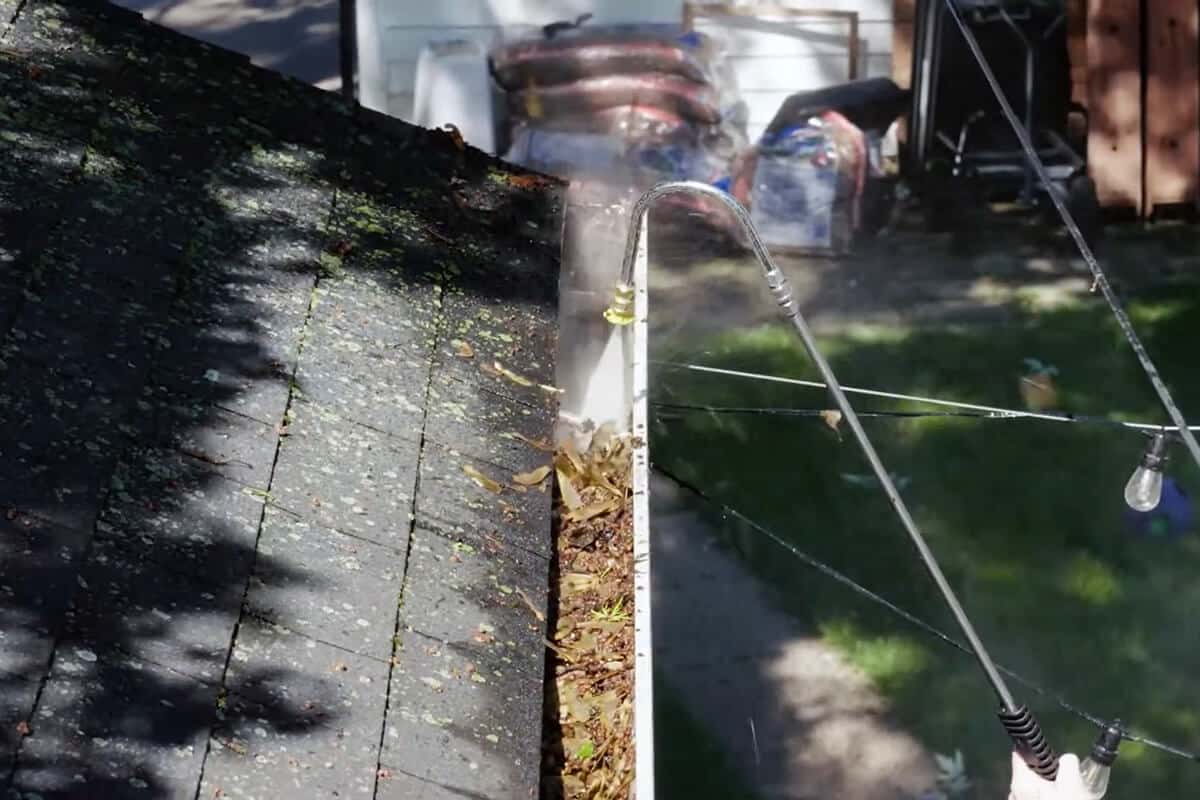
#step 3. Apply soap (optional)
If using detergent, fill the washer’s soap tank or use a bucket if needed. Switch to a black (soap) nozzle and gently spray inside and outside of the gutters. Let the solution sit for 10–15 minutes before rinsing.
#step 4. Systematic cleaning
Start at the end farthest from the downspout and work toward it. Hold the nozzle at a 45° angle and clean in small sections (3–5 feet at a time) for thorough, even results. Avoid spraying directly at joints or corners.
#step 5. Downspout cleaning
Spray water into the top of the downspout. If water doesn’t exit the bottom, use a jet nozzle or plumbing snake to break up clogs. Continue until water flows freely.
#step 5. Final rinse and inspection
Do a final pass along the gutters to flush out remaining debris. Inspect for any missed spots, clogs, or signs of damage like leaks or loose brackets.
Post-cleaning maintenance: Keeping your gutters in top shape
- Check drainage: Run water through the gutters and downspouts to ensure it flows freely. Slow drainage may indicate a clog or alignment issue that needs fixing.
- Inspect for damage: Look for rust, cracks, holes, or loose brackets. Fixing these early helps prevent leaks and structural problems.
- Clean up: Dispose of debris collected on the ground or tarp. Rinse nearby surfaces if splashed, and clean your pressure washer before storing it.
- Prevent future buildup: Install gutter guards or screens to block debris, and schedule seasonal cleanings—especially in spring and fall—to maintain performance year-round.
Conclusion
Using a pressure washer to clean your gutters is a fast, effective, and safe method when done correctly. It saves time, delivers better results, and eliminates the strain of manual cleaning. With the right PSI, attachments like a telescopic wand or curved nozzle, and a focus on safety, you can easily maintain your gutter system and prevent water damage.
At BISON, we offer high-quality cleaning machines built for performance and reliability. As a professional pressure washer manufacturer in China, we supply durable, efficient pressure washers ideal for both residential and commercial use. Our products meet international standards and are trusted by importers worldwide. Clean faster, safer, and smarter—with BISON.
Take action today—simplify gutter maintenance with BISON’s professional-grade pressure washers. Import directly from our factory in China and benefit from premium products, expert service, and dependable supply.
FAQs about clean gutters with a pressure washer
Yes. A pressure washer gutter cleaning attachment lets you clean gutters safely and easily from the ground.
At least twice a year—once in spring and once in fall. Cleaning before winter is also recommended to prevent blockages and ice damage.
Old or lightweight gutters can bend, crack, or leak if subjected to excessive pressure. Use a lower pressure setting with a nozzle angle of 25° or 40°. Spray at an angle to avoid seams or corners.
You might also enjoy
Questions?
Contact Us Today.
Find more?
Related Posts
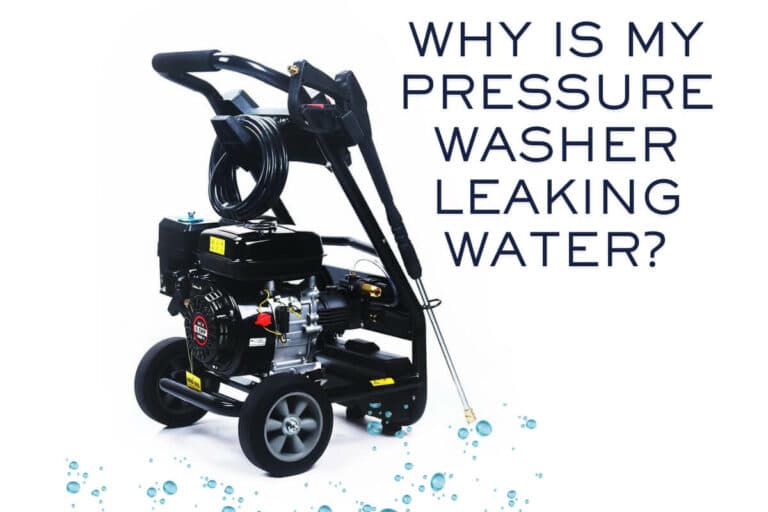
Why is my pressure washer leaking water?
BISON will explore the common causes of leaks in pressure washers and provide step-by-step solutions to help you restore your machine to peak condition.
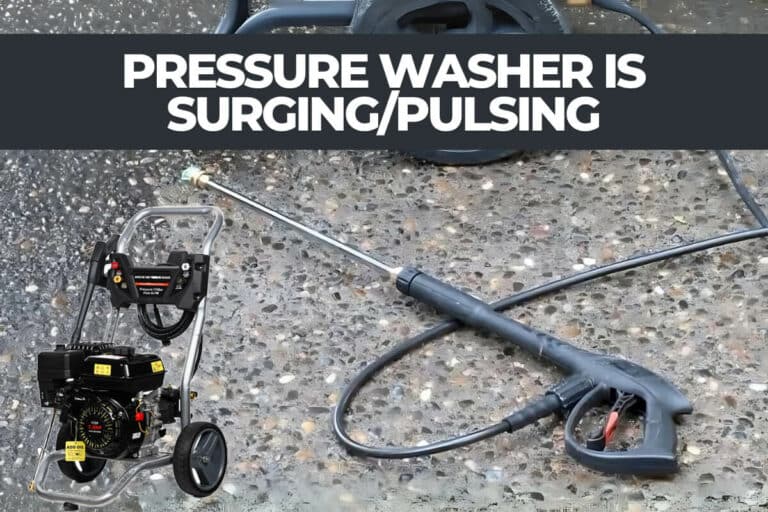
Pressure washer is surging/pulsing
we’ll help you understand why your pressure washer is surging and guide you through easy steps to fix it so you can get back to
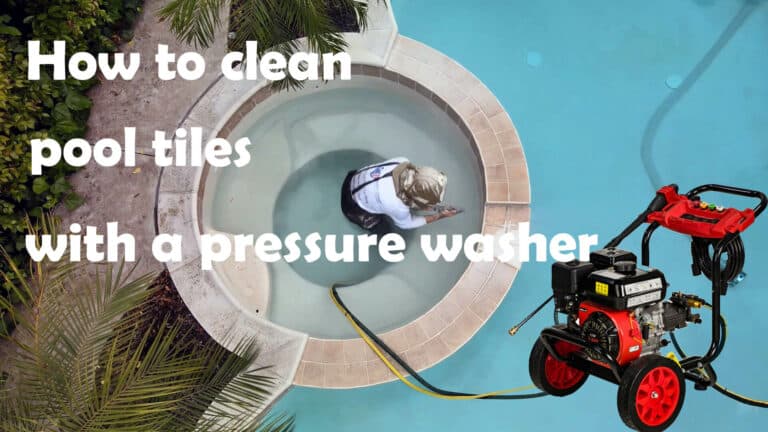
How to clean pool tiles with a pressure washer
This comprehensive guide will walk you through the steps to restore your pool tile to its original glory using a pressure washer.
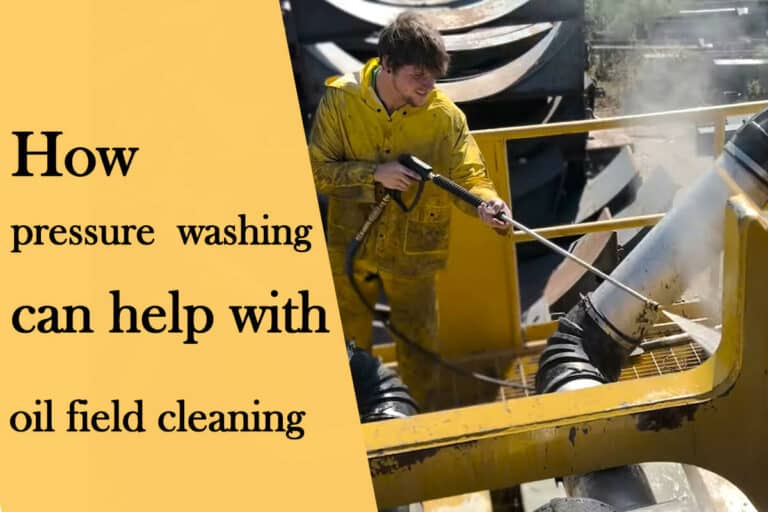
How pressure washing can help with oil field cleaning
This article will show how pressure washing can provide a cleaning solution for the oilfield industry and explore its benefits and applications.

